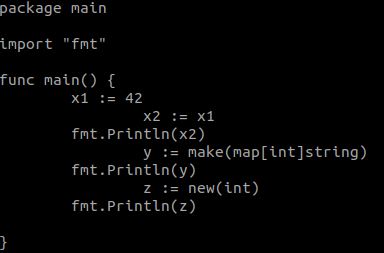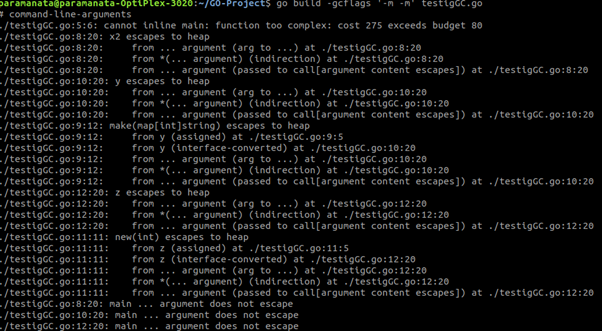Developed by Google, Golang or Go is an intriguing programming language, that is not only fast but simple and powerful at the same time. Set apart with its simplicity, built-in features, and concurrency model for effective development, Go comes with an uncomplicated syntax and minimal design that fosters readability and maintainability.
Fresh from the point of view of innovation, the programming system was thought from the ground up to create a lean, mean, and compiled solution that leaves room for huge multithreading, concurrency, and performance under pressure.
Originally developed for networking and IT infrastructure programs, the idea was conceived to replace frontrunning high-performance languages such as Java and C++. However today this promising language is used for multiple applications.
Focused on agility, minimalism, and reliability, Go is a programming language you need to take a closer look at. Our blog is compiled to help you get an insightful overview of memory management in Golang, emphasizing its significance and mechanisms. We also cover topics such as memory allocation, garbage collection, stack handling, and debugging techniques. Perfect for beginners and experienced developers, it offers practical insights into optimizing memory usage and debugging issues in Golang programs.
Why Golang?
Go, created by Google, is a popular programming language known for its simplicity and high performance. It is widely used for cloud and systems programming, game server development, and text-processing tasks. Major companies like Google, Dropbox, SoundCloud, Docker, Cloudflare, and BBC rely on Go for their projects, showcasing its robustness and reliability.
Go is easy to learn, develop, compile, deploy, and run, making it a favorite among developers. Designed with cloud computing in mind, Go includes built-in testing facilities for seamless code testing. Its support for cross-compilation, with extensive tutorials available, further enhances its versatility. Additionally, Go’s efficient garbage collector simplifies memory management, ensuring smooth and efficient application performance.
Overview of Memory Management in Go
As computer programs are executed, they write objects to memory. At the same time, it is essential to eliminate these objects when they are not needed. This process is nothing but memory management.
Go utilizes automatic memory management, such as automatic memory allocation and automatic garbage collection, which prevents several lingering bugs.
Memory block is a continuous memory segment and memory blocks can come in different sizes. In Go, a memory block may host multiple values such as struct, array, Slice, etc.
When is Memory block allocated in Golang?
In Go, memory allocation occurs primarily in two scenarios: when using new and make. Functional parameters and local variables are typically allocated on the stack, providing fast access and automatic cleanup. However, for dynamic memory needs, Go provides the new and make functions.
- The new function allocates a single memory block and is typically used for creating values of struct types. It returns a pointer to the newly allocated zeroed memory.
- On the other hand, make is used to create slices, maps, and channels. Unlike new, make allocates multiple memory blocks and returns an initialized value. For instance, a slice created with make can dynamically grow using the built-in append function, which extends memory as needed.
Understanding these allocation methods helps manage memory effectively in Go, ensuring optimal performance and resource utilization.
Where is Memory block allocated?
In Go, memory allocation can occur on both the stack and the heap, depending on how the memory is managed. When using the new function, the memory block may be allocated on either the stack or the heap. In contrast, memory blocks created using make are always allocated on the heap.
Go employs the OS function mmap, like TCMalloc (Thread-Caching Malloc), to allocate memory on the heap. This is efficient for managing large and dynamic memory needs. Additionally, Go uses goroutines, which maintain their own small stacks acting as memory pools for certain memory blocks. The maximum stack size is 1 GB on 64-bit systems and 250 MB on 32-bit systems, adjustable via the SetMaxStack function.
To ensure efficient program execution, the Go compiler often allocates memory blocks on the heap, which can then be accessed by multiple goroutines. This necessitates the use of the garbage collector to manage and free unused memory. For analyzing memory allocation, flags like -gcflags -m can be used to identify how and where memory is allocated, including heap allocations for package-level variables and implicit pointers in a global memory zone.
When is the Memory block collected in Go?
- Package-level allocated memory variables will never be collected.
- Goroutine stack collected automatically (not by the garbage collector) while exiting.
- The garbage collector (GC) collects only allocated memory in a heap only if is not referenced i.e. unused memory blocks.
N.B. To debug Go uses Stack () to stack trace of goroutines.
How does the Compiler detect unused memory blocks?
In Go, garbage collection (GC) is carried out in two phases. One, the mark phase, and two, the sweep phase. GC uses the tri-color algorithm to analyze the use of memory blocks, visits all grey global and stack objects, and marks them as black and this process repeats till the last grey object and in sweep phase memory blocks are collected.
Garbage Collector
Garbage Collector or GC maintains a table for every allocated memory with a reference count. Once the count comes to ZERO the object in the heap is marked as grey. You can be rest assured that objects in the black set have no pointers to any object that falls under the white set. However, it cannot be denied that an object of the white set can have a pointer to an object of the black set because this does not impact the operation of the garbage collector. There is a probability of objects of the grey set having pointers to a few objects of the white set. Lastly, the objects of the white set are the candidates for garbage collection.
Garbage collector comes into action when a threshold is satisfied as defined in the environment variable GOGC. Using the SetGCPercent (package runtime/debug) function GOGC can be set, default GOGC=100, and negative percentage disables garbage collection.
Recent garbage information is collected using GCStats via the GetGCStats function.
When variable Escapes to the heap?
In this context, “escapes to the heap,” indicates it will be dynamically allocated on the heap at runtime because it is passed to a function argument that escapes itself.
x1 is not escaped to the heap, as it is not passed to any function where x2 escapes to the heap.
Some cause variables to escape to the heap:
- Pointers or values as an argument to the function.
- Sending pointers or values containing pointers to channels: AS compiler cannot determine when goroutine will receive the data on a channel and when can be free.
- Pointers in a slice: Slice may be on the stack but the referenced data escapes to the heap.
- Arrays of slices: It may get reallocated because an append can exceed its capacity.
- Methods on an interface type: As the interface gets type and value at runtime.
Debugging In GO:
We can use the below-mentioned flags for debugging Go memory:
- go tool compile -S testigGC.go
- go build -gcflags ‘-m -m’ testigGC.go
In a Nutshell
Created in 2007, Google’s Go has evolved radically from being the engineer’s muse to a battle-tested programming language behind some of the most important cloud-native projects across the world.
Its simplicity, performance, and powerful concurrency model make it ideal for a wide range of applications. Understanding Go’s memory management—from allocation to garbage collection—ensures efficient and optimized use of resources. Whether you are a beginner or an experienced developer, mastering these concepts will help you create high-performance, reliable software with Go. This blog provides a comprehensive overview, offering practical insights to enhance your Go programming skills.
Have more questions on Golang Memory Management?








